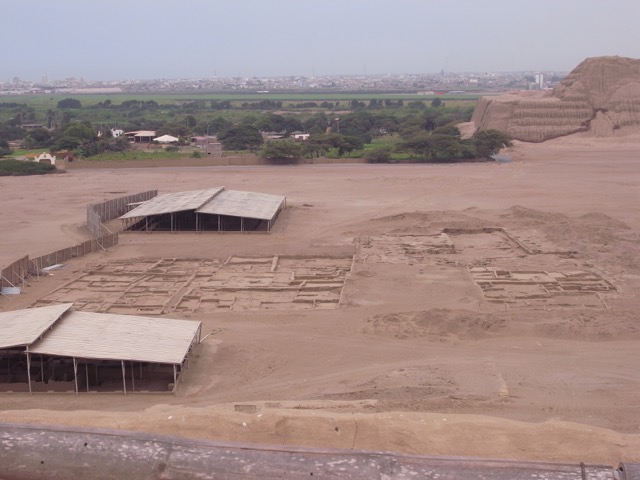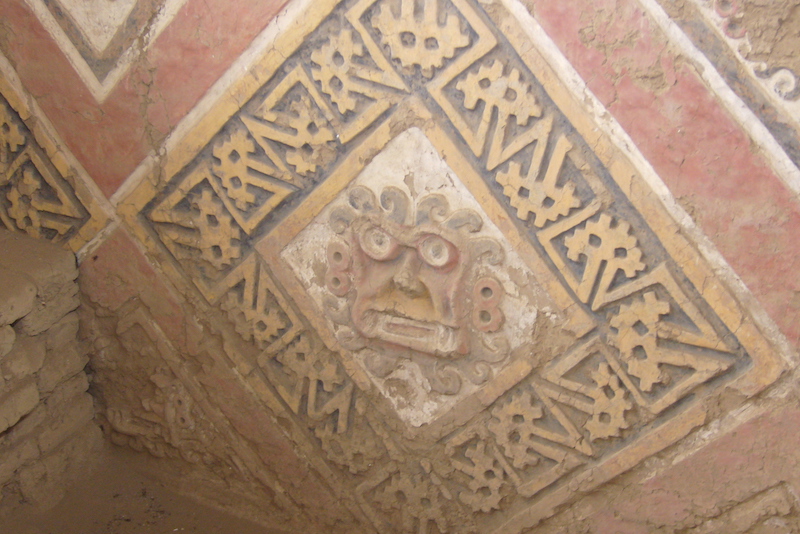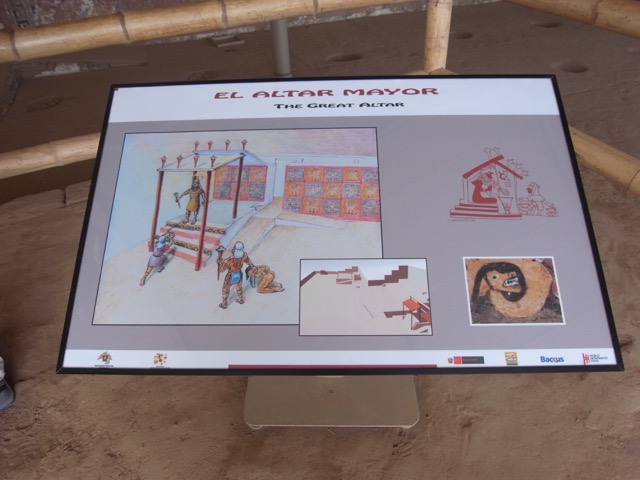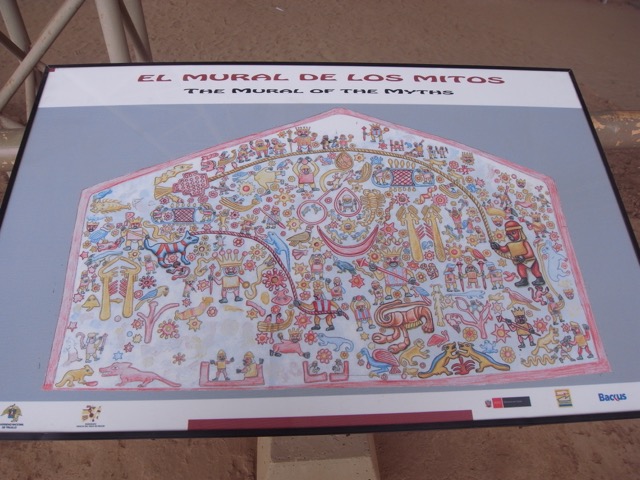
Huacas de Moche
Situated on the outskirts of Trujillo, the Huacas de Moche consist of the Huaca de la Luna and del Sol, which were the sacred and political centre of the Moche culture.

Huacas de Moche
The Huaca del Sol is visible from the Huaca de la Luna. It is the world's largest adobe structure, with an estimated 140 million bricks used in its construction; but it was badly looted and damaged by the Conquistadors.

Huacas de Moche
Between the two ceremonial huacas lay a residential area, which along with Huaca del Sol, is gradually being uncovered and analysed by archaeologists.

Huacas de Moche
An information panel depicts how the residential area may have looked at its zenith in the 9th Century AD.

Huaca de la Luna: Cerro Blanco
Cerro Blanco, which means 'white mountain', overlooks Huaca de la Luna, and was venerated by the Moche.

Huaca de la Luna
Adobe bricks - some with personalised markings, perhaps indicating that they were donated by particular individuals or families - were the building blocks of the huacas.

Huaca de la Luna
The huaca is a series of superimposed structures built over six centuries: when one temple fell out of use, the Moche simply built another on top of it.

Huaca de la Luna
When the Moche built a new temple, they filled in the previous one with adobe bricks, thereby hiding the old murals.

Huaca de la Luna
Uncovering the murals, without damaging them, is a painstaking process for archaeologists.

Huaca de la Luna
Examination of bone discoveries and interpretation of the murals point to the regular practice of human sacrifice at the site.

Huaca de la Luna
Bas-relief images of Ai-apaec, the decapitator god. The colours have faded over the centuries, as a result of the sun and weathering.

Huaca de la Luna
Ai-apaec is a pre-Inca word meaning 'omniscient' and his image appears all over the huaca.

Huaca de la Luna
This information panel shows how the Moche mural designs and architecture changed over time.

Huaca de la Luna
A variation of the god Ayapec's design.

Huaca de la Luna
This is thought to be the huaca's Main Altar, where priests would receive offerings and prisoners.

Huaca de la Luna
This information panel shows how the altar may have looked in Moche times.

Huaca de la Luna
The huaca is now covered by a roof to prevent further deterioration of the treasures below.

Huaca de la Luna

Huaca de la Luna
The main temple has a 75 m (245 ft) long facade consisting of seven steps, each nearly 3 m (10 ft) high, decorated with a row of larger-than-life images.

Huaca de la Luna
Some of the images depict humans, such as parades of armed warriors and naked prisoners.

Huaca de la Luna
Other images at the main temple show mythical beings such as spiders and dragons holding decapitated human heads, or Ai-apaec, the decapitator god.

Huaca de la Luna
This information panel makes it clearer how the Main Temple facade would have looked in Moche times.


Huaca de la Luna
The Mural of the Myths is a complex, colourful relief in the corner of the main plaza. It contains sophisticated scenes that are thought to represent various myths of Moche culture.

Huaca de la Luna
This information panel of the Mural of the Myths gives a clearer representation of the wide variety of details contained: anthropomorphic and zoomorphic imges, as well as highly symbolic elements are combined.

Huaca de la Luna
The Mural of the Myths is a recent discovery, and little is known about its meaning. It is thought that the iconographic elements relate to both daily and ritual life. The sophistication of the imagery and execution of the work point to its importance.

Huaca de la Luna

Huaca de la Luna
The Moche imagery is highly striking, even 1,200 years after the decline of their culture.

Huacas de Moche Museum
The site museum is small but contains some lovely examples of Moche pottery and jewellery. Photography is not allowed inside, though.





























